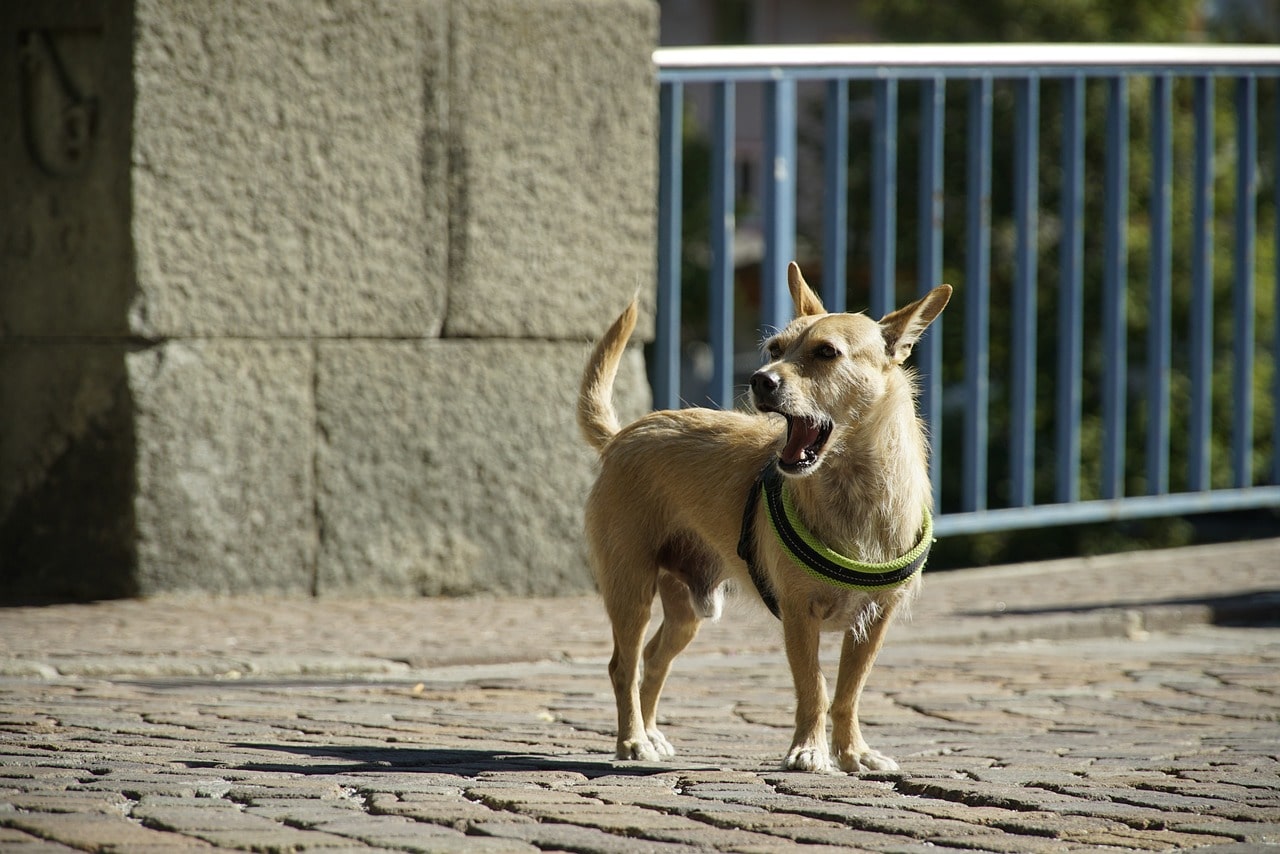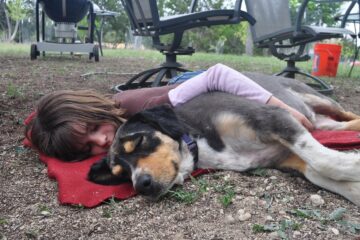Dogs communicate through various vocalizations, and barking is a fundamental part of their expressive language.
If you’re curious about how to encourage your dog to bark naturally or want to strengthen the communication bond with your furry friend, this guide is tailored for you.
Discover 13 expert tips that unravel the nuances of canine communication and foster natural barking behavior.
Table of Contents
Unleashing Canine Communication: How to Get Your Dog to Bark Naturally

1] Understand Canine Instincts
Embarking on a journey to understand your dog’s instincts is a crucial step in fostering natural barking.
Dogs bark for various reasons, including alerting to potential threats, expressing excitement, or seeking attention.
By recognizing these natural triggers, you gain insight into your dog’s communication methods.
This understanding forms the foundation for encouraging and channeling their barking behavior in a positive and constructive direction.
2] Spend Quality Time
Quality time is the cornerstone of a strong bond between you and your dog.
Engage in interactive activities, play sessions, and daily walks to foster a deep connection.
A strong bond encourages your dog to express themselves more freely, and natural barking becomes an integral part of their communication.
Regular, positive interactions create an environment where your dog feels comfortable showcasing their personality, including through the expression of barks.
Tip: “A connected bond encourages dogs to express themselves freely, including through natural barking.”
3] Create Playful Stimuli
Stimulating your dog’s playfulness contributes not only to their overall well-being but also to the natural expression of barking.
Introduce a variety of toys and activities that elicit excitement. Interactive toys, puzzle feeders, and games that engage their senses invigorate their playfulness.
As your dog becomes more animated during play, spontaneous barking emerges as a joyful expression of enthusiasm.
4] Socialize with Other Dogs
Dogs are social animals, and barking is a natural form of communication with their peers.
Arrange playdates, visits to dog parks, or enroll in group training classes to facilitate positive interactions with other dogs.
Socialization not only enhances your dog’s overall behavior but also encourages natural barking as they engage in communication with their canine companions.
• Dogs are social animals; barking is a natural form of communication • Arrange playdates, visit dog parks, or enroll in group training classes • Facilitate positive interactions with other dogs for enhanced behavior • Socialization encourages natural barking as part of canine communication.
5] Provide a Safe Haven
Dogs may bark naturally to establish their territory or signal a sense of security.
Create a designated and comfortable space for your dog, such as a cozy bed or crate.
This secure environment assures your dog, and the confidence gained often translates into natural barking behavior.
A safe haven provides them with the assurance they need to express themselves vocally.
Understanding your dog’s natural instincts and creating a secure environment are key elements in encouraging natural barking
6] Use Verbal Cues
Introducing verbal cues associated with barking commands is an effective way to encourage natural barking.
Teach your dog specific phrases like “speak” or “talk” while using positive reinforcement, such as treats or praise, when they follow the command.
Over time, your dog will associate these cues with the act of barking, allowing you to channel and control their vocalization in various situations.
7] Incorporate Environmental Sounds
Expose your dog to recorded environmental sounds that mimic natural triggers, such as doorbells, footsteps, or other animals.
This exposure helps desensitize them to various auditory stimuli and prompts natural barking responses as they perceive these simulated situations.
Gradual exposure to these sounds allows your dog to practice their communication skills in a controlled environment.
8] Reward Natural Barking
Positive reinforcement plays a pivotal role in encouraging natural barking behavior.
When your dog barks naturally, offer immediate positive reinforcement such as treats, verbal praise, or affection.
Associating natural barking with positive outcomes reinforces the behavior, creating a positive feedback loop.
Consistent rewards strengthen the connection between the act of barking and the enjoyable consequences, making it more likely to recur.
Tip: “Associating natural barking with positive outcomes reinforces the behavior in a healthy and joyful manner.”
9] Vary Daily Routines
Dogs thrive on novelty and new experiences.
Varying your dog’s daily routines introduces novelty, stimulating their curiosity and prompting natural barking.
Changes in the environment, exposure to different stimuli, or introducing new toys can create opportunities for your dog to express themselves vocally in response to the unfamiliar.
This variability contributes to a more enriched and mentally stimulated lifestyle.
10] Interactive Play
Engaging in interactive play that encourages vocal expression is a delightful way to let your dog express themselves naturally.
Games like tug-of-war, fetch, or interactive puzzle toys can bring out their playful and vocal side.
Encourage these forms of interactive play, providing a positive outlet for your dog’s energy and allowing them to communicate through barking during moments of excitement.
Interactive play is not just about physical activity; it’s a powerful way for dogs to express themselves naturally, including through barking
11] Celebrate Special Occasions
Celebrating special occasions or milestones with your dog fosters positive associations and can naturally trigger barking as an expression of joy.
Whether it’s your dog’s birthday, an achievement in training, or a simple celebration of your bond, the heightened excitement and positive associations with these events may lead to spontaneous barking.
Embrace these moments, acknowledging your dog’s vocal expressions as part of the celebration.
12] Be Attentive to Body Language
Paying close attention to your dog’s body language is key to understanding their inclination to bark.
Subtle cues such as raised ears, a wagging tail, or an alert posture may indicate an impending bout of barking.
Being attentive allows you to respond positively to these natural cues, reinforcing your connection with your dog and allowing you to engage in supportive interactions when needed.
Tip: “Being attentive allows you to respond positively to natural cues, strengthening the understanding between you and your dog.”
13] Consult with a Professional
If you encounter challenges or want personalized guidance in fostering natural barking, consider consulting with a professional dog trainer or behaviorist.
These experts have the knowledge and experience to provide insights into your dog’s specific needs and behaviors.
A professional can offer tailored strategies to ensure that your dog’s natural barking is expressed in a healthy and controlled manner, addressing any concerns or challenges you may face.
How to Get Your Dog to Bark Naturally: FAQs
Is excessive barking a sign of a behavioral issue?
Excessive barking can be a sign of underlying behavioral issues or unmet needs. It’s essential to assess the context and frequency of barking to determine if there are any concerns.
Can all dogs be trained to bark on command?
Most dogs can be trained to bark on command with consistent training and positive reinforcement. However, individual temperament and breed characteristics play a role in the ease of training.
Are there health concerns related to excessive barking?
Excessive barking, if sudden or accompanied by other behavioral changes, may indicate health concerns. Consult with a veterinarian to rule out any medical issues contributing to the behavior.
How long does it take to train a dog to bark on command?
The duration varies based on the dog’s temperament and previous training experience. With consistent efforts, some dogs may learn to bark on command within a few weeks.

Conclusion:
Tapping into your dog’s natural inclination to bark can be a delightful and enriching experience for both pet and owner.
By incorporating the 13 tips provided in this guide, you’ll not only encourage your dog to express themselves naturally but also deepen the connection you share.
Remember to be patient, observant, and supportive as you embark on this journey of fostering how to get your dog to bark naturally, creating a harmonious and communicative relationship that transcends words.
Also Read : Should I Leave My Puppy to Cry at Night





